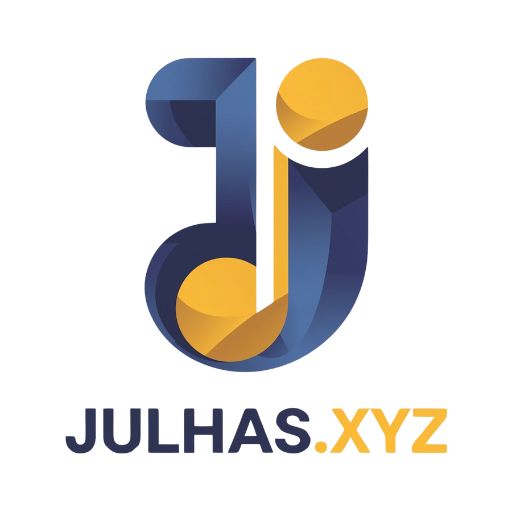Search is evolving fast. It’s no longer just about ranking #1 on Google. AI-powered search engines and answer tools now play a major role in how people find information. To stay visible, you need to optimize your content for AI SEO like AIO, GEO, and AEO.
In this guide, we’ll explain each term in simple words, show how they connect, and share actionable tips to optimize for all three.
What is Artificial Intelligence Search Engine Optimization (AI SEO)?
AI SEO, or Artificial Intelligence Search Engine Optimization, is the modern approach to SEO. It involves both using AI tools to improve your SEO efforts and optimizing your content so that AI-powered search engines can better understand, process, and recommend it to users.
Artificial Intelligence Search Engine Optimization is the overarching strategy that includes AIO, GEO, and AEO. Together, these approaches ensure your content is AI-friendly (AIO), chosen for AI-generated summaries (GEO), and featured as direct answers in snippets or voice search (AEO).
What Is Artificial Intelligence Optimization (AIO)?
AIO is the process of making your content easy for AI-powered tools like ChatGPT, Google Gemini, or Bing AI to understand, process, and recommend.
It goes beyond traditional SEO. Instead of just targeting keywords and backlinks, AIO focuses on how AI reads and interprets your content.
Example
If you run a tech blog reviewing AI tools, AIO means structuring your posts so AI can quickly summarize and recommend them as a top answer.
Key Focus in AIO
- Write AI-friendly, well-structured content.
- Use clear headings, bullet points, and concise language.
- Add schema markup for FAQs, articles, and product reviews.
- Ensure factual accuracy and strong topical authority.

What Is Generative Engine Optimization (GEO)?
GEO is about optimizing for generative AI search engines—like Google’s Search Generative Experience (SGE) or Perplexity that generate answers by pulling from multiple sources. Sometimes it’s also called Generative Search Optimization.
Instead of aiming for “position 1” in search results, the goal is to be the source AI chooses when generating answers.
Example
If you publish “AI in Marketing” tips, GEO ensures your article is factual, well-cited, and structured so AI includes it in its generated summaries.
Key Focus in GEO
- Create context-rich, fact-backed content.
- Optimise for conversational queries.
- Use a tone and format that AI can easily summarize.
- Include citations and trusted references.
What Is Answer Engine Optimization (AEO)?
AEO is about making your content the best possible direct answer for queries—whether in Google featured snippets, Bing, or voice assistants.
While GEO focuses on AI-generated long answers, AEO is about clear, short answers to specific questions.
Example
If someone searches “What is AIO?”, an AEO-optimized article gives a short, precise definition that can be pulled directly into a snippet.
Key Focus in AEO
- Answer questions clearly in the first sentence.
- Use question-based headings (e.g., “What is GEO?”).
- Add FAQ sections to cover common queries.
- Use schema markup for Q&A.
How AIO, GEO & AEO Work Together?
Think of them as a team:
- AIO: Make your content AI-friendly.
- GEO: Make it attractive for conversational queries and generative search engines.
- AEO: Make it concise (short answer boxes) and snippet-ready.
When combined, you cover traditional SEO, AI-powered search, and answer-based ranking in one strategy.

What are the Differences Between AIO, GEO & AEO?
| Feature | AIO | GEO | AEO |
| Focus | AI understanding your content | AI-generated search results | Search engine direct answers |
| Goal | Align with AI reading patterns | Be the source for generative responses | Be the chosen snippet or voice result |
| Techniques | Structured data, AI-friendly formatting | Conversational tone, factual authority | Short, clear, Q&A-style answers |
| Best For | Long-term AI discoverability | Visibility in generative search | Voice search & featured snippets |
How to Optimise Content for AIO, GEO & AEO?
Here are the simple steps to get your blog ready for the future of search:
1. Write for “Answer Systems,” Not Just Search Engines
New smart systems are "answer systems" that give direct, easy-to-read answers. Your content should do the same.
- Start with the Answer: Begin your articles or main sections by directly answering a question in a clear, short paragraph. This makes your content easy for a smart system to find and summarize.
- Organize Your Content Clearly: Use clear headings (like H1, H2, and H3). This helps both people and the smart systems understand the main topics of your article.
- Use Questions in Your Headings: Write your headings as questions (e.g., "What is AIO?"). Then, follow with a direct answer. This is how people naturally ask questions to new search tools.
2. Focus on Being Specific and an Expert
Smart systems prefer content that is trustworthy, factual, and very specific.
- Offer Your Own Information: Share your own surveys, studies, or unique findings. Smart systems love new and unique facts they can't find anywhere else.
- Show You Are an Expert: Make it clear that you have experience and are a trustworthy source. You can do this by including a short bio about yourself, linking to other good websites, and getting mentions from other well-known sites.
- Answer Specific Questions: Instead of writing about very general topics, create content that answers very detailed questions. Smart systems are great at understanding these specific questions, and your content is more likely to be used as a source.

3. Use Simple Code to Help Search Systems
Some small changes to your blog's code can make your content easier to understand for new smart systems.
- Add Special Code (Schema Markup): Use special code on your site, especially for FAQs or articles. This code directly tells search systems what your content is about and what facts it contains.
- Make It Easy to Read: Break up long paragraphs with bullet points, numbered lists, and bold words. Smart systems learn from well-organized content, so this simple formatting helps them understand your writing better.
4. Create Helpful Visuals and Multimedia
Smart systems are also getting better at understanding images and videos. Adding these to your content can make it more complete and useful.
- Use Clear Images and Charts: Include images, photos, and charts with good descriptions (alt text). This helps both people and smart systems understand the visuals and how they relate to your text.
- Add Videos to Explain Things: If you have videos, embed them in your articles. Smart systems can sometimes process these to get more information, and they also make your content more engaging for readers.

5. Build Strong Connections with Other Sites
Just like in the old days of search, links from other websites still matter. They show that your content is a trusted source.
- Link to Other Good Sources: When you mention a fact or a study, link to the original source. This shows you've done your research and makes your article more trustworthy.
- Get Links from Other Websites: When other trustworthy sites link back to your blog, it's a huge sign to smart systems that you are a reliable expert on your topic.
6. Keep Learning and Changing
The world of smart systems is always changing, so your strategy should too.
- Watch for Mentions: Use tools to see when your brand or content is used by a smart system in an answer.
- Look at New Numbers: Look beyond just traffic and ranking. Check to see how people behave on your site after they come from a smart search result.
- Keep Content Fresh: Regularly update old articles with new information and a better structure to keep them useful for these new search systems.

Several Other Things Related to AI SEO
Search Experience Optimization (SXO)
This term is gaining traction and bridges the gap between traditional SEO and user experience (UX). It's about optimizing a website not just for rankings, but for how users engage with the content after they click. Since AI systems now evaluate user behavior and content engagement more than ever, a good SXO strategy (fast pages, clear navigation, engaging content) directly supports your AIO efforts.
Large Language Model Optimization (LLMO)
This is another term that is very similar to GEO. It specifically refers to optimizing content to be easily understood and cited by Large Language Models (LLMs), such as those that power ChatGPT and Google's Gemini. You can mention this as a synonym for GEO to show you're aware of the latest industry buzzwords.
Semantic SEO
Focuses on understanding and matching user intent by creating content that covers topics comprehensively, allowing AI to grasp the meaning behind queries.
Voice Search Optimization
Tailoring content to answer spoken questions clearly and concisely, enabling voice assistants like Alexa or Google Assistant to deliver direct responses.
Natural Language Processing (NLP) Optimization
Creating content that aligns with AI’s language understanding algorithms, using natural phrasing and clear structure to aid machine comprehension.
Content Experience Optimization (CXO)
Designing content to not only rank well but also engage and satisfy users, improving metrics that AI algorithms consider for ranking.

Frequently Asked Questions
Is AIO the same as traditional SEO?
No, AIO is not the same as SEO. SEO focuses on a broader range of factors to rank your website. AIO is a more modern approach that specifically focuses on how AI systems understand and use your content. A well-rounded strategy uses both.
How does generative AI affect search results?
Generative AI search engine optimization is changing search by providing direct, synthesized answers instead of just a list of links. This means a user might not click on any website link if the AI's summary is good enough. As a content creator, this shift makes it more important than ever to have your content be the one that is cited in these summaries.
Can AI help me with my optimization efforts?
Yes! You can use artificial intelligence-based optimization tools to research and analyze data, create content outlines, and even write drafts. These tools can speed up your workflow significantly, but remember that AI is a tool, not a replacement for human creativity and expertise.

What are some common AI optimization techniques?
Artificial intelligence optimization techniques include using schema markup to structure data, writing content that directly answers questions, and creating comprehensive guides to build topical authority. It also involves focusing on quality and trustworthiness, which are core ranking factors for generative AI application landscape and beyond.
What is the difference between AI and an algorithm?
An algorithm is a set of defined rules or steps to solve a problem. Artificial Intelligence (AI), on the other hand, refers to systems that learn and adapt, often using many algorithms. Think of an artificial intelligence vs algorithm difference like a basic calculator (algorithm) and a self-learning chatbot (AI).
What are some of the most popular answer engine optimization tools?
Many existing toolshave features for this. Tools like Surfer SEO can help you with content structure. Using schema markup is one of the best free ways to optimize for direct answers. Ultimately, the best tool is a good content strategy.
Conclusion
Search engines are shifting toward AI-powered, answer-first results. By using AIO, GEO, and AEO together, you make your content readable, recommendable, and rankable — across both traditional and generative search.
The winning move? Think beyond old-school SEO. Optimise for how AI reads, how it generates answers, and how it serves instant responses. That’s the path to master SERP and AI search.

